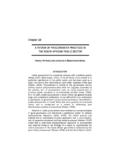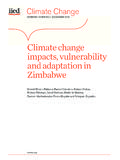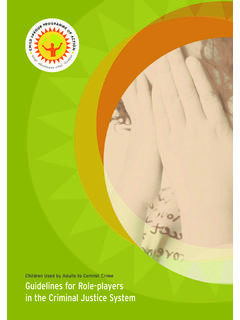Transcription of prison update A5 final - who.int
1 PREVENTING SUICIDE IN JAILS AND PRISONS Department of Mental Health and Substance Abuse World Health Organization International Associationfor Suicide PreventionInternational Associationfor Suicide Prevention WHO Library Cataloguing-in-Publication Data Preventing suicide in jails and prisons. (Preventing suicide : a resource series) Co-produced by WHO and IASP, the International Association for Suicide Prevention. - prevention and control. , Attempted - prevention and control. factors. Health Organization. Association for Suicide Prevention. ISBN 978 92 4 159550 6 (LC/NLM classification: HV 6545) World Health Organization 2007 All rights reserved. Publications of the World Health Organization can be obtained from WHO Press, World Health Organization, 20 Avenue Appia, 1211 Geneva 27, Switzerland (tel.)
2 : +41 22 791 3264; fax: +41 22 791 4857; e-mail: Requests for permission to reproduce or translate WHO publications whether for sale or for noncommercial distribution should be addressed to WHO Press, at the above address (fax: +41 22 791 4806; e-mail: The designations employed and the presentation of the material in this publication do not imply the expression of any opinion whatsoever on the part of the World Health Organization concerning the legal status of any country, territory, city or area or of its authorities, or concerning the delimitation of its frontiers or boundaries. Dotted lines on maps represent approximate border lines for which there may not yet be full agreement. The mention of specific companies or of certain manufacturers products does not imply that they are endorsed or recommended by the World Health Organization in preference to others of a similar nature that are not mentioned.)
3 Errors and omissions excepted, the names of proprietary products are distinguished by initial capital letters. All reasonable precautions have been taken by the World Health Organization to verify the information contained in this publication. However, the published material is being distributed without warranty of any kind, either expressed or implied. The responsibility for the interpretation and use of the material lies with the reader. In no event shall the World Health Organization be liable for damages arising from its use. Printed by the WHO Document Production Services, Geneva, Switzerland Page iii CONTENTS FOREWORD ..iv GENERAL SUICIDE 2 INMATES ARE A HIGH-RISK 3 SUICIDE PREVENTION IN CORRECTIONAL 4 Development of Suicide 5 Profile 1: Pre-trial 5 Profile 2: Sentenced 5 Risk Factors Common to Jails and Prisons.
4 6 Situational 6 Psychosocial 7 7 8 Profiles Can Change Over 8 KEY COMPONENTS OF A SUICIDE PREVENTION 9 9 Intake Screening ..10 Post-intake Management Following Screening ..13 Social Physical Environment and Mental Health If a Suicide Attempt So-called Manipulative If a Suicide Summary of Best REFERENCES ..24 Page iv FOREWORD Suicide is a complex phenomenon that has attracted the attention of philosophers, theologians, physicians, sociologists and artists over the centuries; according to the French philosopher Albert Camus, in The Myth of Sisyphus, it is the only serious philosophical problem. As a serious public health problem it demands our attention, but its prevention and control, unfortunately, are no easy task.
5 State-of-the-art research indicates that the prevention of suicide, while feasible, involves a whole series of activities, ranging from the provision of the best possible conditions for bringing up our children and youth, through the effective treatment of mental disorders, to the environmental control of risk factors. Appropriate dissemination of information and awareness-raising are essential elements in the success of suicide prevention programmes. In 1999 WHO launched SUPRE, its worldwide initiative for the prevention of suicide. This booklet is the revised version of one of a series of resources prepared as part of SUPRE and addressed to specific social and professional groups that are particularly relevant to the prevention of suicide.
6 It represents a link in a long and diversified chain involving a wide range of people and groups, including health professionals, educators, social agencies, governments, legislators, social communicators, law enforcers, families and communities. We are particularly indebted to Dr Heather L. Stuart, Community Health and Epidemiology, Queen s University, Kingston, Ontario, Canada, who produced an earlier version of this booklet. We also acknowledge the contribution of the following experts, to whom we express our gratitude: Dr Annette Beautrais, Christchurch School of Medicine, Christchurch, New Zealand Dr ivind Ekeberg, Ullev l Hospital, University of Oslo, Oslo, Norway Professor Robert D.
7 Goldney, Adelaide University, Gilberton, Australia Professor Richard Ramsay, University of Calgary, Calgary, Canada Page v Professor Lourens Schlebusch, Natal University, Durban, south africa Dr Airi V rnik, Tartu University, Tallinn, Estonia Professor Julio Arboleda-Fl rez, Queen s University, Kingston, Ontario, Canada. The current update of this booklet has been undertaken in collaboration with the Task Force on Suicide in Prisons of the International Association for Suicide Prevention (IASP). We would like to thank the following persons for their contributions to the updated version: Dr Norbert Konrad, Institute of Forensic Psychiatry Charit , Berlin, Germany Dr Marc S.
8 Daigle, University of Qu bec at Trois-Rivi res and Centre for Research and Intervention on Suicide and Euthanasia (CRISE), Canada Dr Anasseril E. Daniel, University of Missouri School of Medicine, Columbia, Missouri, United States of America Dr Greg Dear, Edith Cowan University, Joondalup, Australia Dr Patrick Frottier, Mittersteig, Vienna, Austria Mr Lindsay M. Hayes, National Center on Institutions and Alternatives, Mansfield, United States of America Professor Ad Kerkhof, Vrije Universiteit, Amsterdam, the Netherlands Professor Alison Liebling, Cambridge Institute of Criminology, Cambridge, United Kingdom of Great Britain and Northern Ireland Dr Marco Sarchiapone, University of Molise, Campobasso, Italy.
9 The collaboration of IASP with WHO on its activities related to suicide prevention is greatly appreciated. The resources are being widely disseminated, in the hope that they will be translated and adapted to local conditions - a prerequisite for their effectiveness. Comments and requests for permission to translate and adapt them will be welcome. Dr Jos M. Bertolote Coordinator, Management of Mental and Brain Disorders Department of Mental Health and Substance Abuse World Health Organization Page 1 PREVENTING SUICIDE IN JAILS AND PRISONS Suicide is often the single most common cause of death in correctional settings. Jails, prisons and penitentiaries are responsible for protecting the health and safety of their inmate populations, and the failure to do so, can be open to legal challenge.
10 Further fuelled by media interest, a suicide in correctional facility can easily escalate into a political scandal. Moreover, suicidal behaviour by custodial inmates means a stressful event for officers and other prisoners faced with it. Therefore, the provision of adequate suicide prevention and intervention services is both beneficial to the prisoners in custody, as well as to the institution in which the services are offered. It is within this context that correctional settings worldwide struggle with the problem of preventing inmate suicide. Correctional settings differ with respect to inmate populations and local conditions: short-term detainees, pre-trial offenders, sentenced prisoners, harsh sentencing practices, overcrowding,1 possibility of purposeful activity,2 times spent locked up, sanitation, broad sociocultural conditions, the prevalence of HIV/AIDS, levels of stress,3 and access to basic health or mental health services.

















